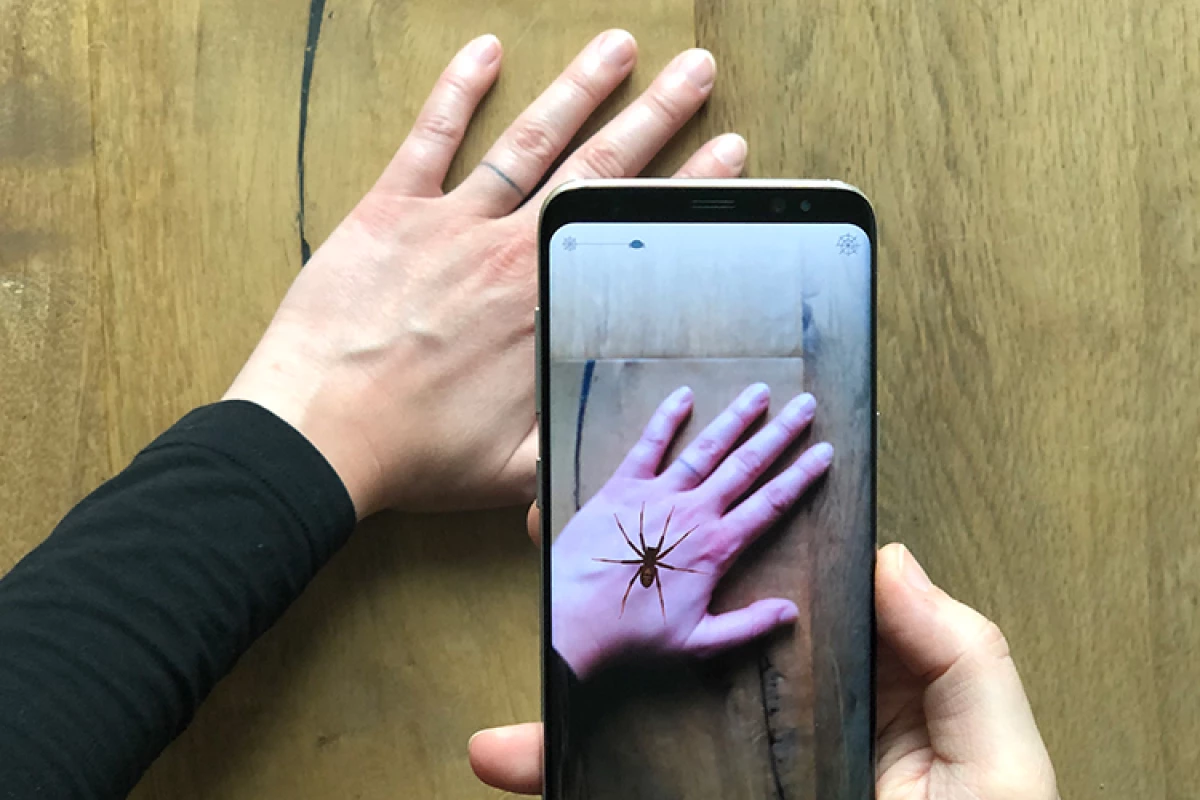A new smartphone app developed by researchers at the University of Basel is using augmented reality to help reduce a person’s fear of spiders. In a study published in the Journal of Anxiety Disorders the app was found to significantly reduce feelings of fear and disgust after a two-week program.
It is estimated up to five percent of all people have a significant fear of spiders. This entirely reasonable phobia of terrifying eight-legged creatures is thought to be evolutionarily embedded into some people.
A compelling 2017 study found six-month-old babies often display stress responses when exposed to spiders, suggesting an aversion to spiders could be innate, developed to protect us from dangerous threats.
Exposure therapy is one of the more effective ways to treat crippling fears such as arachnophobia. However, safely exposing individuals to the source of their fear is not always an easy process. For example, not every therapist's office keeps a couple of giant tarantulas on hand for exposure therapy.
In recent years technological advances have made it easier and safer to try exposure therapy for a variety of different phobias. Virtual reality (VR) exposure therapy in particular has allowed clinicians to work with patients who harbor fears of heights. But VR therapy is still expensive and limited mainly to environments where clinicians can supervise patients during the sessions.
A new smartphone app called Phobys is designed to bring exposure therapy to the arachnophobic masses with a simple augmented reality interface designed to project images of moving spiders onto a person’s surrounding environment. A clinical trial testing the app’s efficacy recruited 66 subjects with either a clinical or subclinical fear of spiders.
Two-thirds of the cohort were tasked with completing six 30-minute sessions on the smartphone app over a two-week period. The other third acted as control with no direct intervention.
At the beginning and end of the six-week study all participants completed a number of behavioral assessments to measure their fear and disgust responses. One particular assessment, called the Behavioural Approach Test (BAT), involves exposing participants to a real spider in a transparent plastic container and measuring how far they go approaching and interacting with the spider.
“We report that repeated home-use of the stand-alone, smartphone-based, gamified AR exposure app was effective in the reduction of phobic fear in participants with fear of spiders,” write the researchers in the new study. “Specifically, the app use led to reductions in fear, disgust and avoidance behaviour at medium effect sizes when tested in a real-life situation, and to reductions at large effect sizes in questionnaire-based fear measures.”
Although the authors of the study declare no conflicts of interest it is important to note the smartphone app has been further developed into a commercial app that is now available for both Apple and Android smartphones. The app is free to try but the full training protocol comes at a cost.
The new research was published in the Journal of Anxiety Disorders.
Source: University of Basel




